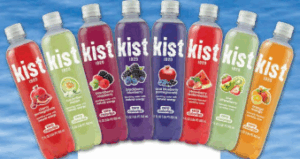The US Court of Appeals for the Federal Circuit reversed a Trademark Trial & Appeal Board decision, concluding that there was a likelihood of confusion between the marks KIST and SUNKIST when used in connection with soft drinks. Sunkist Growers, Inc. v. Intrastate Distributors, Inc., Case No. 24-1212 (Fed. Cir. July 23, 2025) (Prost, Taranto, Stark, JJ.)
For at least 90 years, Sunkist has offered soft drinks under the SUNKIST trademark both directly to consumers and through its licenses. Intrastate Distributors Inc. (IDI) purchased the KIST brand and proceeded to use the KIST mark for soft drink and sparkling water products. The KIST mark was active for about a decade before being cancelled in 2013. In 2019, IDI filed intent-to-use trademark applications for the KIST mark both in standard characters and in a stylized character form for “[s]oft drinks, namely, sodas and sparkling water; concentrates and syrups for making soft drinks.” Sunkist opposed the registration, arguing the KIST mark was likely to cause confusion with the SUNKIST mark.
Focusing its analysis on the SUNKIST standard character mark, the Board determined that all DuPont factors other than similarity of the marks favored likelihood of confusion. The Board found that the marks were not sufficiently similar because they conveyed different commercial impressions. According to the Board, while SUNKIST referenced the sun, the KIST mark referenced a kiss, relying on the image of lips that appear next to the KIST mark. The Board therefore found no likelihood of confusion between IDI’s marks and the registered SUNKIST marks. Sunkist appealed.
The Federal Circuit began by emphasizing that the KIST mark was not a design mark and the image of lips did not always appear beside the mark. The Court relied on the following image in its opinion, noting that “[n]one of the bottles include a lips image or reference a kiss” and instead “emphasize flavors.”

The Federal Circuit noted that the record contains no evidence concerning the degree of consumer exposure to the mark with the image of lips versus without lips. The Court found that the Board relied too heavily on the KIST mark’s appearance alongside an image of lips, and ultimately determined that substantial evidence did not support the finding that the mark referenced a kiss. The Court noted that while some of the SUNKIST marks contained a sun, many were standard character marks that did not include a sun. The Court thus concluded that substantial evidence did not support a finding that the similarity of the marks favored no likelihood of confusion.
Since the Board had previously found that the remaining DuPont factors favored likelihood of confusion and the Federal Circuit determined that the similarity of the marks also favored likelihood of confusion, the only remaining consideration was actual confusion. Although Sunkist had not proven instances of actual confusion, the Court noted that its precedents had never required actual confusion, primarily because “actual confusion is hard to prove.” Accordingly, the Court found that the KIST mark, when used in connection with the goods and services contained in IDI’s application, was likely to cause confusion with the SUNKIST mark, and reversed the Board’s decision to dismiss Sunkist’s opposition.





